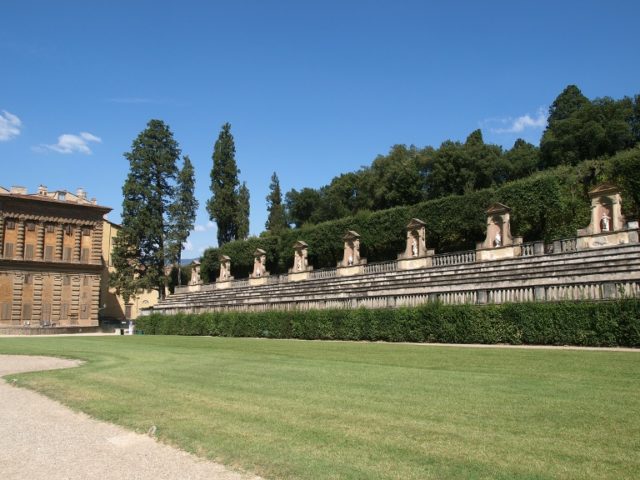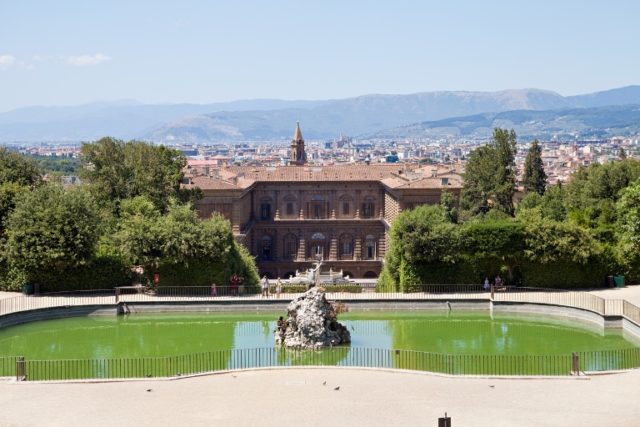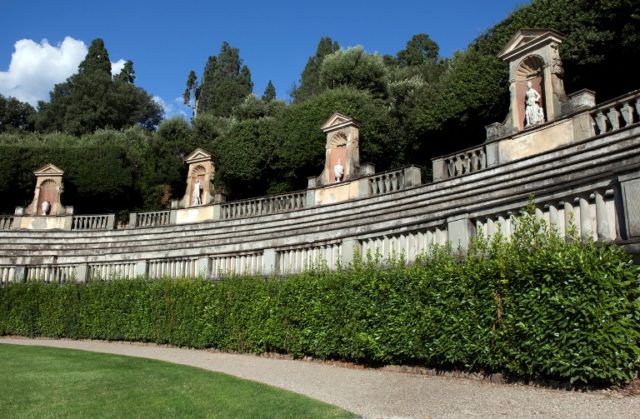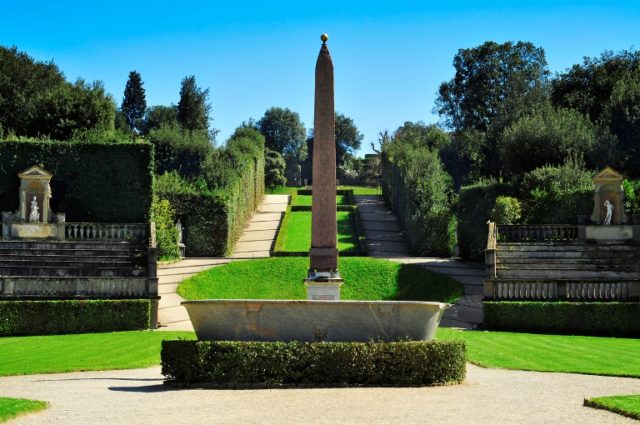Florence is widely known as the birthplace of the Renaissance. However, if it had not been for the Medici family, the city would not enjoy that status today. The Medicis sponsored some of the greatest artists of all time and built architectural masterpieces imitated worldwide to this day. One of them is the beautiful Boboli Gardens.
When the family purchased the Pitti Palace, work began on the construction of the largest garden in Florence behind the palace. The idea of building such a magnificent garden was that of Cosimo I de’ Medici, grand duke of Tuscany.
He created it as a present for his wife, Eleonora di Toledo, the daughter of a Spanish nobleman. Although their marriage began as a political arrangement, Cosimo fell deeply in love with her. He was very specific about the plans for the garden: it was to be as beautiful as his wife.

Cosimo entrusted the project to the already proven architect Niccolò Tribolo. He laid the original design of the gardens, but didn’t see them completed due to his premature death. Among the first constructions was the Amphitheatre.
Tribolo himself initiated its construction, but it was continued by father and son architects Giulio and Alfonso Parigi and was completed in 1634. Its design resembles a hippodrome and is decorated with statues representing characters from Roman mythology. In the center of the amphitheater is an obelisk brought to the gardens from Villa Medici in Rome that in turn was taken from the Temple of Luxor in Egypt.
It is still unclear why the garden was named Boboli, but some scholars suggest it is after the “Borgoli” or “Borgolini” noble family that had residences near the Pitti Palace. After the death of Cosimo, his son Francis I took charge of the Boboli Gardens project. He commissioned Giorgio Vasari, Bernardo Buontalenti, Bartolomeo Ammannati, and many other prominent architects to continue Tribolo’s work, and also to enlarge the garden and add new features.
The succeeding dukes of Florence enriched the garden with more sculptures, including several from the Roman Forum of Trajan, and created a magnificent view over the city. The result was the creation of the most impressive gardens in Florence. One of the highlights of the garden is the Grotto (Grotta Grande).

It is decorated with sculptures mostly created in the Mannerist style. Michelangelo’s work The Prisoners was initially placed in the grotto; however, later it was taken to the Galleria dell’Accademia. The most famous sculptures are Bathing Venus by Giambologna and Vincenzo de’ Rossi’s Paris and Helen. The grotto is divided into three chambers and rumor has it that two of them were particularly built for the romantic liaisons of Duke Francesco I de’ Medici.

Not a single Italian Renaissance garden would be complete without a beautiful fountain, and Boboli Gardens has many of them. The Fountain of Neptune (Fontana di Nettuno) is known among the locals as “Fountain of the Fork” (Fontana della Forchetta) because of the trident held by the statue of Neptune, the god of the sea. Another remarkable artwork is the Ocean Fountain located in the garden known as “Isolotto” or “little island.” Not all fountains are decorated with gods and goddesses. Three bronze monkeys decorate the fountain in the colorful rose garden named The Giardino del Cavaliere (Knight’s garden).

Orange and lemon trees are a characteristic feature of Medici gardens, and the Boboli Gardens have plenty of them. The Medicis liked to experiment with their citrus trees and often produced unusual cultivars. During wintertime, they were kept in a building in the garden known as Limonaia.
The gardens also have a Museum of Porcelain and a pavilion built in the Rococo style that offers breathtaking views of Florence. Nowadays, they are part of an open-air museum and a UNESCO World Heritage site.
The Boboli Gardens served as a model for creating many magnificent gardens across Europe, including the ones of the Palace of Versailles. The gardens have been appreciated for centuries. Even the famous author Dan Brown included these gardens in his novel Inferno.
